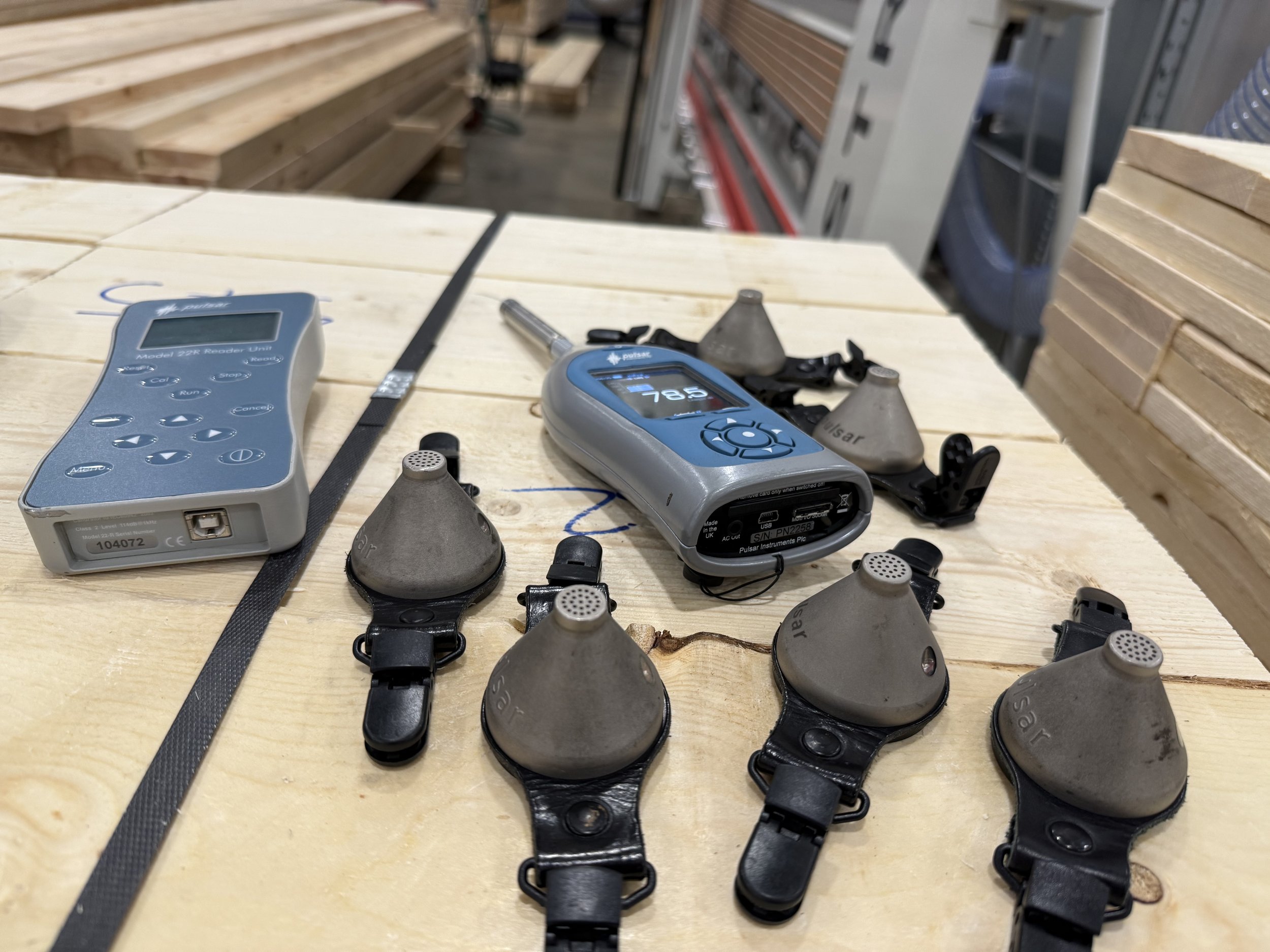Noise assessments - how it works on the day
A common, and understandable, question from clients about noise assessments is how it all actually works on the day.
There are two routes for a noise assessment depending on the type of factory it is, one with a fairly constant production routine with similar jobs every day, or one where the actual tools used and the duration of their use may vary a lot from day to day.
Before I do any measurements, all the meters are calibrated on the site. You do it that day rather than in advance so they are not influenced by things like temperature or humidity changes.
Some of my noise metes - wearable dosimeters and a hand-held noise meter
Factories with constant production
For a lot of clients their production is fairly constant - what happens on one day is pretty much what happens every day and noise is consistent from day to day. There may be some small changes on the day such as machines not being used all day but they are used for part of a day most days and it is roughly the same.
Here, I turn up on the doorstep bag in hand. The client then shows me around so I can get an understanding of the area they want covering and what the machines are. I go through some initial question such as information on the length of shifts worked, current policies for hearing protection, etc..
Then I get on with the assessment. The typical routine is to put the longer-term noise meters in place which run for as long as is needed to get a good steady result, but that doesn’t mean ‘all day’ in most cases. These can sometimes be placed by a machine or worn on the shoulder of selected individuals, whichever best suits the type of work being done. I use whichever route gets the best data.
Read more: How long a noise assessment takes
Read more: Wearable vs location vs hand-held noise meters
While those are running I then work my way around with a hand-held noise meter. This effectively double-checks the long-term ones and also allows me to focus in on specific elements of the work, and confirms for me how long the longer term meters need to run for or if I need to cover other areas as well.
I can be left alone to get on with it so no need to dedicate someone to coming round with me. It is very boring for them if they do as I cannot chat or it influences the results and there is a LOT of standing around not saying anything in a noise assessment!
I then go and find my contact for the site and go through what has been measured to make sure it has covered everything they want. If some machines haven’t been used in that period we can then usually do a quick sample measurement for them.
If I use wearable noise meters I almost never have any issues with staff saying they don’t want it so don’t feel a need to warn them about it in advance, to be honest that sometimes makes it into a bigger issue for them than it actually is. When I am on site I always explain to them that the meter is just sampling the total volume every so often rather than recording anything and people are pretty much always happy to help. A lot then get very interested in the process and want to know more about it and I can bore for Britain on noise stuff.
There is nothing the client needs to do in advance, indeed just keeping it ‘normal’ is important, even to the point of leaving things like stereos exactly as they normally are, no need to go round turning them off in advance.
Factories with changeable working routines
Examples of this are joinery workshops or some engineering sites where individuals are making products which are bespoke, and they often take a project all the way from start to finish rather than working on one part of it. This can also apply to construction and more specialised businesses like shop fitters, stone masons, etc. Here the tools they use will vary considerably from day to day meaning a long-term measurement made on one day probably has no relevance at all to the daily exposure on any other day.
For these the best noise assessment route is to measure the noise levels for each individual job, so that means staff just doing a quick sample use of a tool so I can get a reading from it. I then ask them how long they may use it for, roughly, and from that can work out things like how long it can be used safely and representative daily average exposures.
Read more: Noise assessments for non-routine jobs
Top tip - don’t make me sign-in…
Remember the basics of good health and safety. If you run me over and kill me with a forklift truck or something, just get the body off site - lob it over the neighbour’s fence. If you don’t make me sign in you can deny I was ever there…


